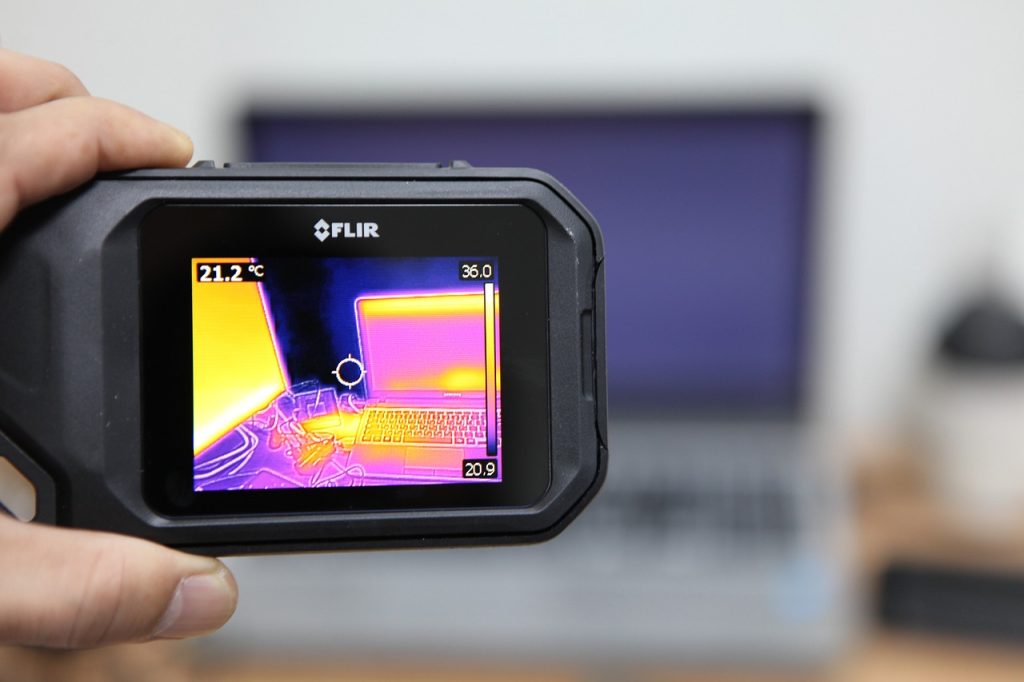How Infrared Cameras Detect Hidden Mold Behind Walls: My Long Island Mold Removal’s Approach to Moisture Mapping
December 27, 2024
Infrared cameras detect hidden mold behind walls by identifying temperature differences that indicate the presence of moisture, a vital precursor to mold growth. These cameras use thermal imaging to sense cooler temperatures, often shown in blue, which suggest where water or moisture may be collecting. This non-invasive method allows you to pinpoint areas behind walls, floors, and ceilings where moisture is present, creating prime conditions for mold. By detecting even slight temperature differentials, you can address moisture issues promptly, preventing significant mold problems and ensuring a healthier environment. Continuing to explore this approach will provide a more detailed understanding of effective mold detection and prevention. How Infrared Cameras Detect Hidden Mold Behind Walls: My Long Island Mold Removal‘s Approach to Moisture Mapping When using infrared cameras for mold detection, you are basically identifying hidden moisture issues that can lead to mold growth. These cameras detect temperature differences, such as colder spots caused by moisture, which are indicative of potential water intrusion or condensation behind walls, floors, and ceilings. By employing infrared cameras in moisture mapping, you can prevent mold growth by locating and addressing moisture pockets before they become significant problems. This non-invasive approach allows for accurate detection without the need for disruptive probing or destruction. Combining infrared cameras with other tools like moisture meters and air sampling guarantees a thorough mold inspection, enabling early intervention and effective solutions to prevent and remove mold. The Power of Infrared Cameras in Mold DetectionInfrared cameras detect hidden moisture and potential mold growth by identifying temperature differences behind walls and other hidden spaces. These cameras sense cooler temperatures, which indicate the presence of moisture, allowing inspectors to pinpoint areas where mold is likely to thrive. By visualizing these temperature variations, you can quickly locate and address moisture issues before they lead to significant mold problems. How infrared cameras detect temperature differences to identify moisture behind walls and other hidden spacesDetecting moisture behind walls and other hidden spaces is crucial for preventing mold growth, and infrared cameras play a significant role in this process. Infrared cameras use thermal imaging to detect temperature differences, which indicate the presence of moisture. Cooler areas, often shown in blue, suggest where water or moisture may be collecting, allowing for precise moisture mapping and identification of hidden mold. How Moisture Mapping Prevents Mold GrowthMoisture mapping with infrared cameras is essential for early detection of mold-causing moisture because it allows you to identify hidden areas of moisture behind walls, roofs, and foundations without invasive procedures. This technology can detect even slight temperature differentials, indicating where moisture may be present and creating an environment conducive to mold growth. By pinpointing these areas early, you can address the underlying moisture issues before they lead to significant mold problems. Why moisture mapping with infrared cameras is crucial for early detection of mold-causing moisture before it spreadsWhen it comes to preventing mold growth in your home or business, identifying hidden moisture is essential. Infrared cameras play a key role in this process through non-invasive mold detection and moisture mapping. These cameras detect temperature variations, indicating moist areas where mold can thrive. This early detection allows for prompt intervention, preventing mold from spreading and ensuring a healthier environment. Non-Invasive and Accurate Mold DetectionInfrared cameras provide a fast, non-invasive, and accurate method for locating moisture behind walls, preventing unnecessary damage to your property. By detecting temperature variations, these cameras identify areas where moisture is present, which are prime conditions for mold growth. This technology allows inspectors to pinpoint potential mold issues quickly and efficiently, ensuring early intervention and effective mold prevention. How infrared technology provides a fast, non-invasive, and accurate method for locating moisture, preventing damageIn detecting hidden mold and moisture, infrared cameras offer a fast, non-invasive, and highly accurate method. These cameras use thermal imaging to identify temperature variations, indicating potential moisture areas behind walls, floors, and roofs. This non-invasive moisture mapping allows for quick detection of hidden moisture, preventing further damage and facilitating early mold detection and remediation. Comprehensive Mold Inspection: Complementary Tools for Effective SolutionsWhen using infrared cameras for mold detection, you also need to integrate other tools to guarantee a thorough inspection. Moisture meters help quantify the moisture levels in areas identified by the infrared camera, providing a more precise measurement of the conditions conducive to mold growth. Additionally, air sampling can confirm the presence of mold spores, allowing for a thorough assessment and targeted remediation plan. How infrared technology works alongside moisture meters and air sampling to confirm mold presence and provide thorough inspectionsTo effectively detect and manage mold growth, combining infrared technology with moisture meters and air sampling is essential. Here’s how these tools work together:
|
|